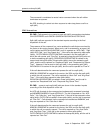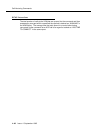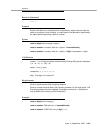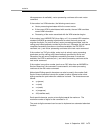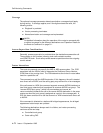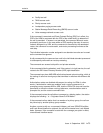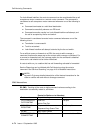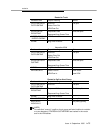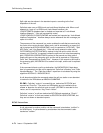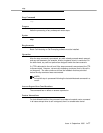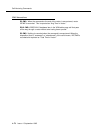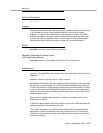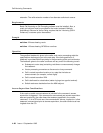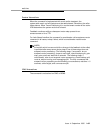
Call Vectoring Commands
A-74 Issue 4 September 1995
For Look-Ahead Interflow, the
route-to
command can be considered either a call
acceptance vector command or a neutral vector command. The command is
considered a call acceptance vector command whenever one of the following is
true:
■ Command terminates to a valid local destination.
■ Command successfully seizes a non-PRI trunk.
■ Command execution results in a Look-Ahead Interflow call attempt, and
the call is accepted by the far end switch.
The command is considered a neutral vector command whenever one of the
following is true:
■ Termination is unsuccessful.
■ Trunk is not seized.
■ Look-Ahead interflow call attempt is denied by the far end switch.
For a call that covers or forwards to a VDN, the
route-to with coverage y
command functions the same way as the
route-to with coverage n
command. For
a covered or forwarded call, the coverage option for the command is disabled
since such a call should not be further redirected.
A
route-to with cov y
to a station that has call forwarding activated is forwarded.
Service Observing can be initiated with Call Vectoring using the route-to
command. See "Service Observing" on page 4-16 for detailed instructions.
NOTE:
Appendix G gives a detailed description of the feature interactions for the
route-to
number with and without coverage command.
CMS Interactions
R3 CMS: Tracking of the
route-to digits
command varies according to the
destination successfully routed to, as follows:
Routed to Station or to Attendant
Database Item Report Heading Notes
OUTFLOWCALLS/
OUTFLOWTIME
Flow Out 1st split
Vector Flow Out
DEQUECALLS/
DEQUETIME
Dequeued Calls 2nd/3rd splits
Dequeued Avg Queue Time
INTIME Avg Time In Vector
CONNECTCALLS/
CONNECTTIME
Other Calls Connect answered calls on G3




